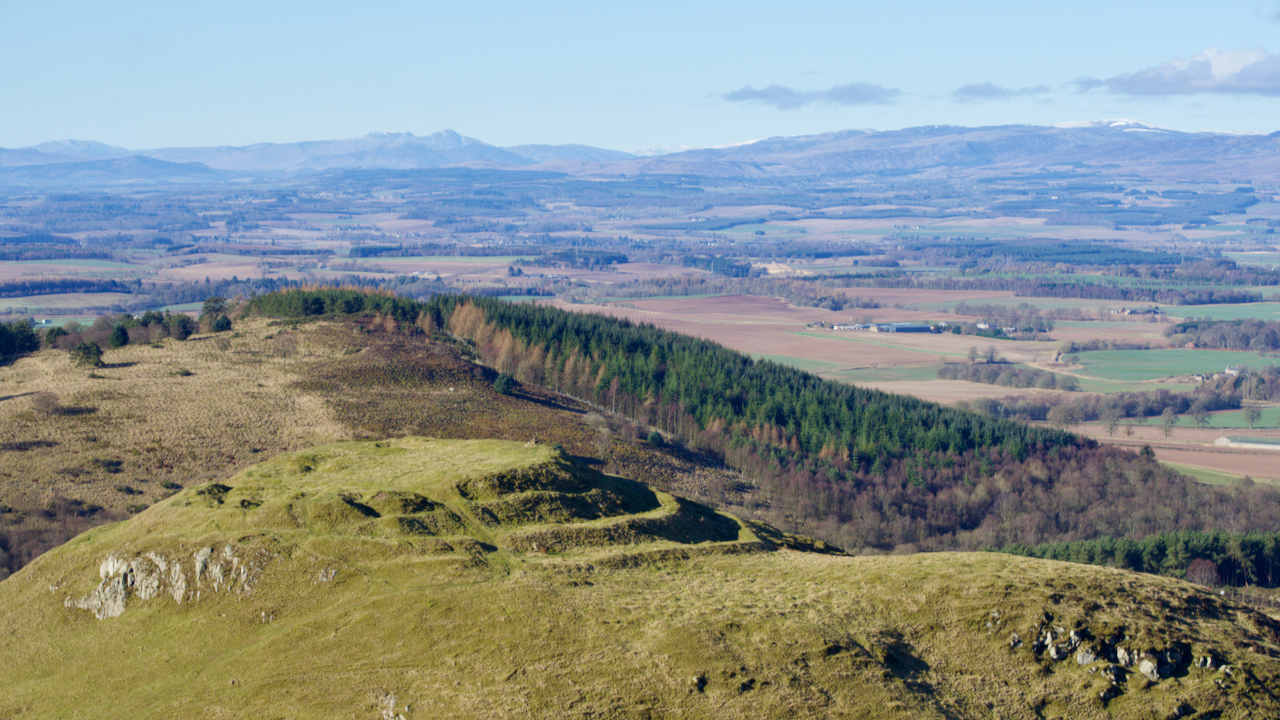Macbeth shall never vanquisb’d be, until
Great Birnam Wood to high Dunsinane hill
Shall come against him.
Shakespeare, Macbeth Act IV, Scene I.
Did the son of a glove-maker from Warwickshire actually make a trip to this hill in Strathmore, or did he simply pick up an already established legend?
Shakespeare’s renowned tragic play portrays Macbeth as having King Duncan assassinated and subsequently taking the throne, only to be dethroned later by Malcolm in 1057. In the play, Macbeth encounters three witches, and their prophecy, quoted above, becomes a reality as Malcolm commands his army of 10,000 to cut down trees from Birnam Wood and use them as cover during their siege on Macbeth’s stronghold, located atop “high Dunsinane hill”.
The oval structure located on the hill was identified as “Macbeth’s Castle” on early maps. Although the association with Shakespeare’s rendition of the tale is still present in current popular culture, the remains found on the mountaintop reveal a far more ancient narrative.
The hill incorporates at least two distinct forts. At the peak, there is a heavily fortified citadel featuring a significant inner wall and two outer ramparts. Beyond this lies a bigger fortification, noticeable from the summit as a solitary bank and ditch tracing a terrace situated at a lower point on the hill’s incline.
It is believed that the larger fortification dates back to the Iron Age era (approximately 1000 BC – 500 AD) and may have housed a settlement with round houses. Some of the remains of these structures are also visible from the summit. The inner fortress was constructed at a later time, although it could have been built on the site of a previous fort. It is probable that people continued to occupy the site during the early medieval era (roughly 500-1000 AD), which concluded around the period of Macbeth and Malcolm.
Although we cannot confirm with certainty that Dunsinane served as Macbeth’s castle, the inner fortress undoubtedly ranks among the most striking hilltop fortifications in the vicinity. Due to its strategic location, offering stunning views over the Tay and Strathmore, it served as a crucial stronghold from the first millennium BC until the era of Macbeth, and it is plausible that people still occupied it during his reign. The hilltop also had been a draw for prehistoric communities, evidenced by their markings on rock outcrops long before the establishment of the initial fort.
The presumed association with Macbeth prompted early antiquarians to conduct significant excavations on the site in 1799 and again in 1854. However, these unmethodical excavations yielded contradictory and perplexing findings and caused considerable damage to the location. Many of the mounds and ditches visible inside the fortress are the remains of the trenches and their accompanying heaps created by those initial investigators.
The name Dunsinane originates from the Gaelic term “Dun,” meaning fortress or fort, and “sinnan,” which may have been an earlier spelling of a personal name, or from “sine,” Gaelic for teat or nipple, which could be a nod to the hill’s shape.

Leave a Reply